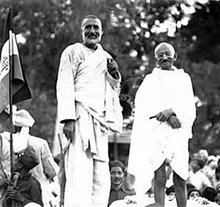Thursday, January 31, 2013
Wednesday, January 30, 2013
Friday, January 25, 2013
Sunday, January 13, 2013
Saturday, January 12, 2013
Futuwwa: Muslim Syndicalism
We have Ibn Battuta's Rihla (14th century C.E.) to thank for our introduction to this phenomenon among Muslims, and the 20th century Marxist medievalist Claude Cahen for making it an object of scholarly interest. Here is Reuben Levy's description (from his now classic The Social Structure of Islam, 1955):
"Within the broad classes of Islamic society and sometimes drawing from all of them are groupings which have at various times and places come about on the basis of some common interest, that might be a handicraft, a sport, a religious 'reform', a political impulse, trading expediency or a combination of two or more. The occupational groups, or trade guilds, probably date from long before Islam and illustrate their history by the manner in which bazaars are disposed in almost any city of the Middle East or North Africa, where the workshops or trading booths of any particular craft are generally to be found assembled in a quarter recognized by tradition as theirs. The guilds had their own officers who saw to internal discipline, but the religio-political authorities also appointed the muhtasib, whose function it was to see that all trading was honest and the laws of Islam not infringed."
"The continuity of the guild tradition may be illustrated by comparison of the social activities of the Anatolian akhiya (? 'fraternities', sing. akhi) in the fourteenth century A.D., with those of the ancient guild of wrestlers in Persia, who in each town have their own zur-khana, or gymnasium, where they practise [sic] their traditional exercises--referred to by Sa'adi in the Gulistan--under the aegis of a large portrait of 'Ali b. Abi Talib, their patron saint."
"Of much greater significance in community life are the religio-political confraternities (turuq; sing. tariqah) which have been a feature of Islamic society in every land. The most familiar are those of North Africa, the best known being that of the Sunusiyah although the Jam'iyat Ikhwan al-Muslimin, founded in 1929 by Shaikh Hasan al-Banna (assassinated in 1949), has achieved notoriety in Egypt. In the Sudan there are few Muslims who do not belong to one tariqah or another. All have orthodox tenets, but the Mahdiyah--rivals of the Khatmiyah or Mirghaniyah, numerically the strongest--also acknowledge the claims of Saiyid Sir 'Abd al-Rahman al-Mahdi (posthumous son of the Mahdi who fought General Gordon) to being the forerunner of the Messiah."
"Frequently there have been close associations between such fraternities and Sufism or dervishism. In Turkey relationships were intimate between the corps of Janissaries and the Bektashi dervishes, members of whose order accompanied the troops as "chaplains". In central Asia, to judge from criticisms in the Soviet Press, there has in recent times been an increase of muridism (apparently a reaction amongst the poorer Muslims against overenergetic secularization), which takes the form of association in religious orders." (Levy, The Social Structure of Islam, Cambridge University Press (1955), 89-90).
Obviously, some of this material is quite out of date, but if one considers the role of trade unionism in the recent popular successes of the Arab Spring in Egypt and Tunisia, one has reason to re-visit the possibilities of grass-roots organizing in Muslim civil society.
Friday, January 11, 2013
Thursday, January 10, 2013
Wednesday, January 9, 2013
Friday, January 4, 2013
Tuesday, January 1, 2013
Subscribe to:
Comments (Atom)





